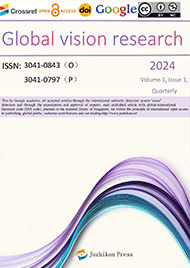 65 84368249
65 84368249 info@juzhikan.asia
info@juzhikan.asia 65 84368249
65 84368249 info@juzhikan.asia
info@juzhikan.asia
UIA meihua international high school
Abstract. This study explores how drag queens use performance as a form of cultural critique to challenge and subvert hegemonic masculinity. By examining the performative practices of drag queens, this research seeks to understand how these performances offer a critical commentary on gender norms, power dynamics, and societal expectations. Through a qualitative approach involving interviews and performance analysis, the study investigates the ways in which drag queens engage with, resist, and reconfigure traditional masculine ideals. The findings suggest that drag performances provide a unique space for critiquing and reshaping dominant gender narratives, ultimately contributing to a broader understanding of gender diversity and fluidity.
Keywords: Drag queens, cultural critique, hegemonic masculinity, performance, gender norms, gender fluidity.
References
[1].Kahn, J. S., Goddard, L., & Coy, J. M. (2013). Gay men and drag: Dialogical resistance to hegemonic masculinity. Culture & Psychology, 19(1), 139-162.
[2].Brown, J. B. (2001). Doing drag: A visual case study of gender performance and gay masculinities. Visual Studies, 16(1), 37-54.
[3].Basiliere, J. (2019). Staging Dissents: Drag kings, resistance, and feminist masculinities. Signs: Journal of Women in Culture and Society, 44(4), 979-1001.
[4].Litwiller, F. (2020). Normative drag culture and the making of precarity. Leisure studies, 39(4), 600-612.
[5].Dougherty, C. (2017). Drag performance and femininity: Redefining drag culture through identity performance of transgender women drag queens.
[6].Hobson, K. (2013). Performative Tensions in Female Drag Performances. Kaleidoscope: A graduate journal of qualitative Communication research, 12.
[7].Rupp, L. J., Taylor, V., & Shapiro, E. I. (2010). Drag queens and drag kings: The difference gender makes. Sexualities, 13(3), 275-294.
[8].LeMaster, B. (2015). Discontents of being and becoming fabulous on RuPaul's drag u: Queer criticism in neoliberal times. Women's Studies in Communication, 38(2), 167-186.
[9].Johnson, C. W., & Dunlap, R. (2011). ‘They were not drag queens, they were playboy models and bodybuilders’: media, masculinities and gay sexual identity. Annals of Leisure Research, 14(2-3), 209-223.
[10].Levitt, H. M., Surace, F. I., Wheeler, E. E., Maki, E., Alcántara, D., Cadet, M., ... & Ngai, C. (2018). Drag gender: Experiences of gender for gay and queer men who perform drag. Sex Roles, 78, 367-384.
[11].Maclaran, P. (2017). Judith Butler: Gender performativity and heterosexual hegemony. In Canonical authors in consumption theory (pp. 227-233). Routledge. [12].Berbary, L. A., & Johnson, C. W. (2017). En/activist drag: Kings reflect on queerness, queens, and questionable masculinities. Leisure Sciences, 39(4), 305-318.
[13].Halberstam, J. (1997). Mackdaddy, superfly, rapper: Gender, race, and masculinity in the drag king scene. Social Text, (52/53), 105-131.